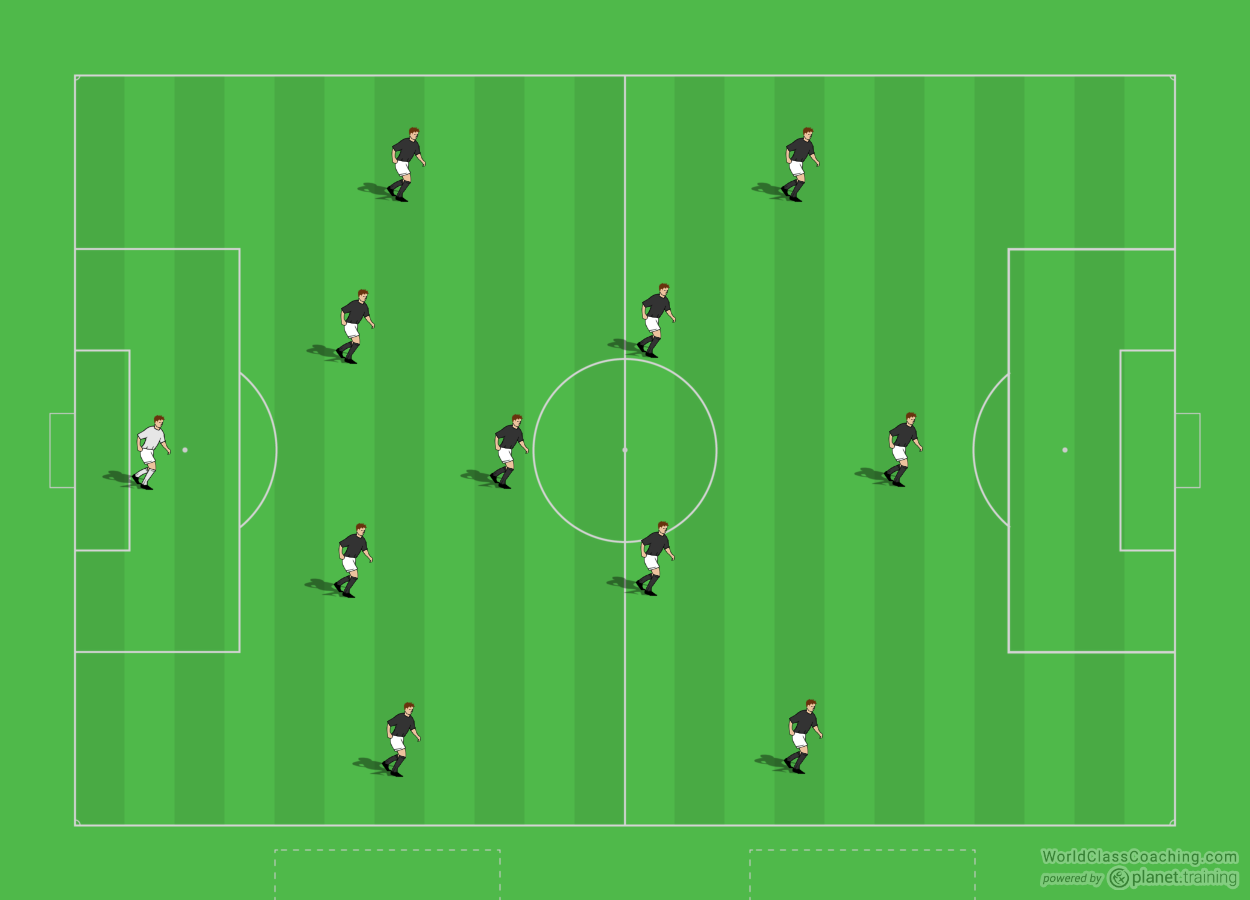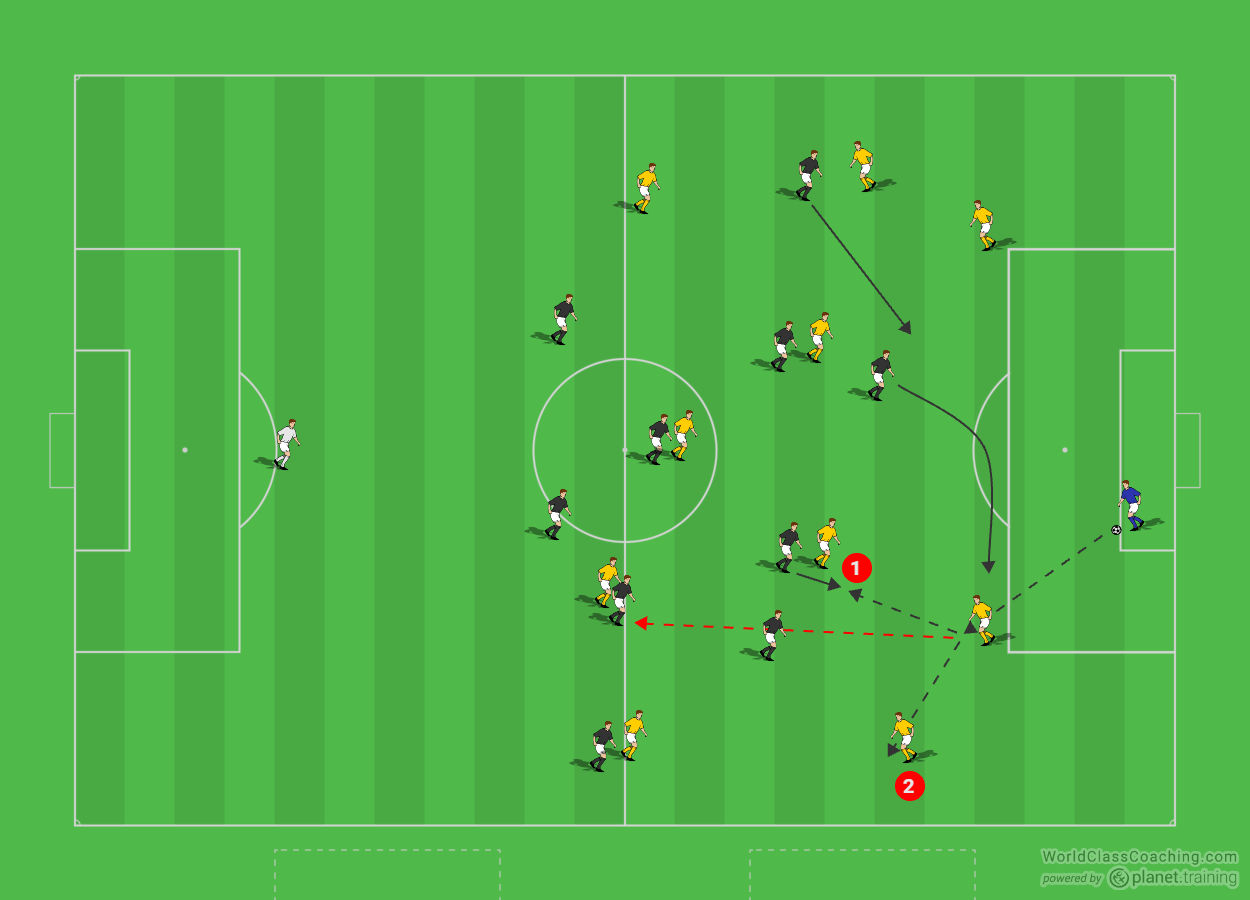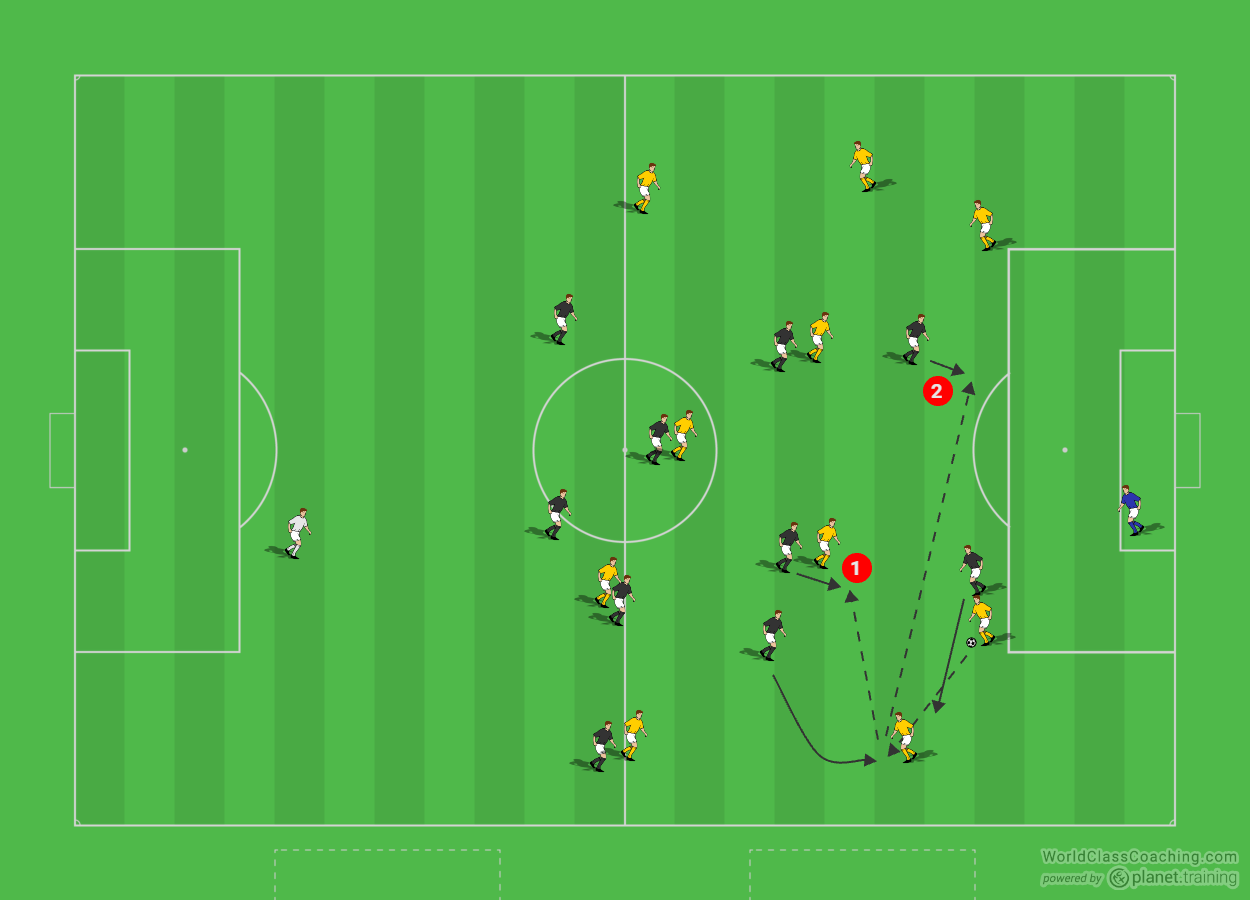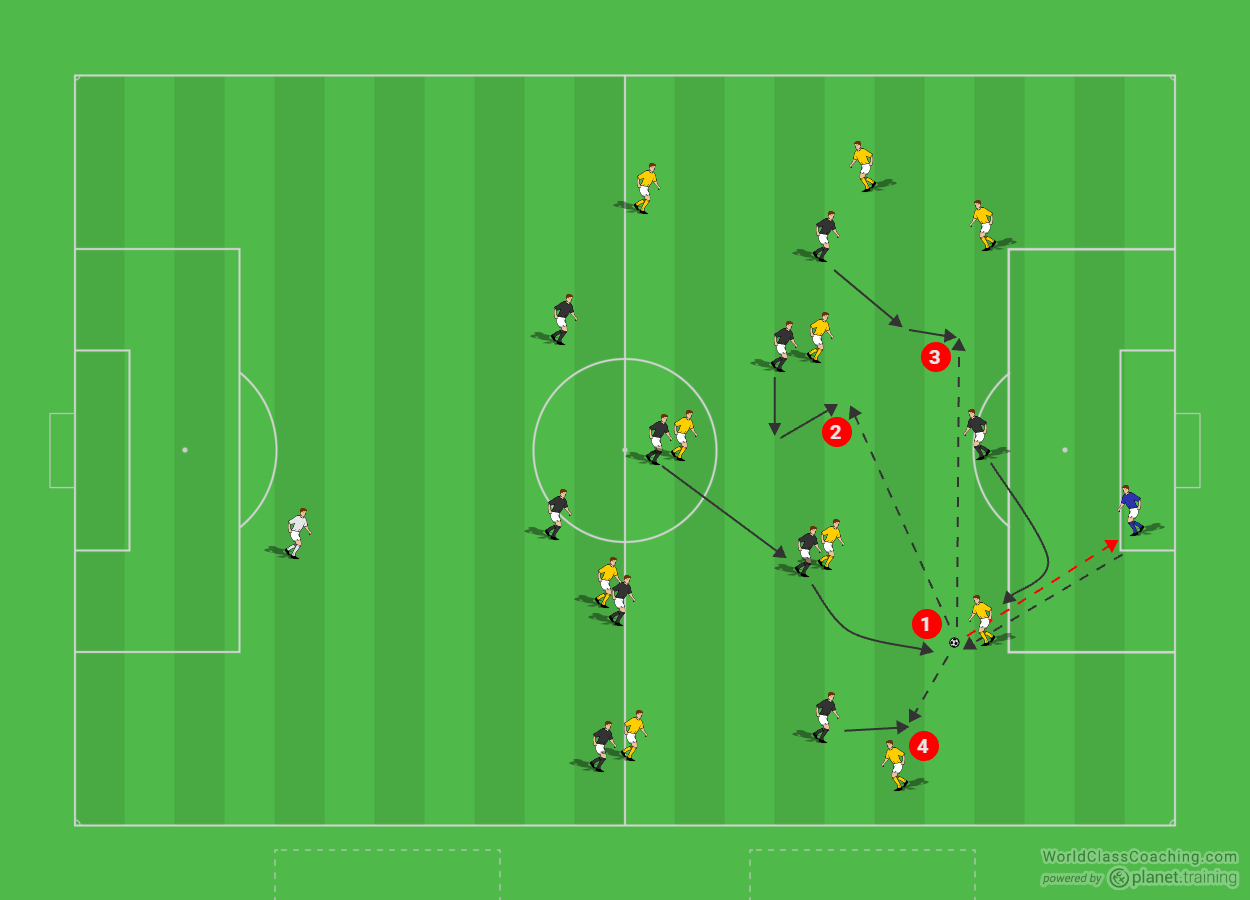By Sean Pearson
With the new USSF mandated birth year and small sided games changes there is a lot of trial and error regarding formations and systems of play. Instead of 8v8 formations, as coaches, we are now trying to figure out how to position our players in the new 7 v 7 and 9 v 9 formations. Some clubs have an academy structure where all teams must play the same formation, others allow coaches to choose what works for their team because players in each team have different attributes.
In these Systems of Play articles, I aim to address a wide range of 7 v 7, 9 v 9 and 11 v 11 formations and ways in which to use your players to your advantage.
Formation
The 4-3-3 is an extremely popular formation and the best for pressing with 3 strikers and 2 attacking midfielders, so because of the natural positions of the formation there are players further up the field. It is used by many professional clubs in this manner, think Barcelona, Liverpool and Manchester City.

Pressing Options
When the opposition has a goal kick set up to allow them to play out from the back. Most teams almost always sit on top of the 18-yard box regardless. But for me, if I see this, I’m telling my goalkeeper to kick long. I am not going to try and play out in pressure that I can clearly see before the ball is kicked.
Coaches may argue to ‘play the right way’ or to ‘play through the pressure’ but I argue your job is to teach your players about the game. All you do by playing out of the back regardless is put your team under unnecessary pressure and you negate the opposition’s press by going over them. That is also developing players. It is developing their intelligence and understand of scenarios and options from what they see rather than just focus on their technical skills. I am not saying never play out but there are moments to do it and moments not to.
So, during a goal kick drop off to allow the center backs the space they need to receive the ball. Have your striker closer to one center back than the other. This show your whole team which side you will press, as most likely the goalkeeper will pass to the opposite side. Below the striker is closer to the right center back so the goalkeeper would pass left.
As the goalkeeper passes this is when player movements are important to cut off passing lines. The striker cuts off the pass across to the opposite center back and then presses the player on the ball. The midfield 3 get close and ball side of their counter parts. The opposite striker comes across into the space for any loose passes across the field. The striker on the side of the ball stays central to stop penetration through the middle. The back 4 come across, the right back gets tight to the left winger, the two center backs go 1 in front and 1 behind the striker and the left back comes inside to stay connected.
At this point the only pass open should be left back. 1) Occasionally the center back will try to pass to a center midfielder so your center midfielders must be ready to anticipate this pass and be ready to step forward to intercept the pass.

When the left back receives the ball the right striker, sprints to block the pass forward to the left winger and then presses the left back from the front. The striker, after stopping the center back passing across, continues their press to cut off the pass from left back to center back. So now the left back is being pressured from the front and behind.
If one of those players can win the ball great, but the main objective is to force the left back into making a rushed decision and play a weak and inaccurate pass either to 1) a central midfielder or 2) across the field. Either of which you should have players waiting for this to happen and move towards the ball to then attack.

Now teams might be aware of this type of pressing and center back may use the goalkeeper to switch the ball away from the press so, if this keeps happening or even to just change up the press so it is not as easy to play around, press in a different way.
As the goalkeeper takes the goal kick, tell your striker to cut off the line back to the goalkeeper first then press the center back from behind. Tell the center midfielder on that side to run straight at the center back but cut off the left side. 1) can you initially win the ball now because the center back is being pressure immediately and go to goal. The defensive midfielder moves up to mark the player the attacking midfielder just left. Both the 2) opposite attacking midfielder and 3) wide striker come infield to intercept a pass across the field from the center back. 4) the left striker anticipates the attacking midfielder not being able to completely cut off the left side and is ready
to intercept a pass across.

Some coaches may argue, why would you want to force the ball into the middle of the field, why not use the sideline as an added defender to squeeze the space? For me, I want my teams to win the ball back, in bounds, in front of goal, with the shortest distance to goal. Rather than force the other team out of bounds which allows the other team to then get back and defend with numbers.
Both options of pressing from a goal kick have their strengths and weaknesses but if your team responds quickly and are in the right positions to force the ball in a direction you want both will be effective and you will create chances from bad decisions.
By Sean Pearson. Sean is also the author Coaching Team Shape in the 3-3-1, Coaching Team Shape in the 4-2-3-1 and Coaching Team Shape in the 4-3-3


